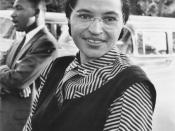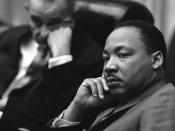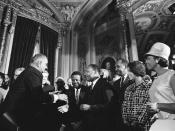The 1960s, with the Camelot Kennedy administration and Lyndon Johnson's Great Society, was a decade in which many cultural changes took place. The United States itself was amidst the disheartening Cold War and the heartbreaking assassination of President Kennedy. During the period, feminism was revived. The Civil Rights Movement brought change to African Americans with their pursuit for Black Power. Other minorities such as Hispanic Americans and Native Americans organized unions or militant groups to protest for their rights in economic and political issues. Thus, two of the most profound cultural changes were the further development of gender roles, and the emphasis on race relations.
The role of women in society changed dramatically in the 1960s. The Equal Pay Act of 1963 required employers to pay women the same as men for the same work, and the Title VII of the Civil Rights Act of 1964 prohibited discrimination in employment on the basis of sex as well as of race.
As a result, more women had the opportunity to work rather than maintaining their traditional rolls as nurtures and housewives. In addition, women gained reproductive rights. FDA approved the sale of birth control pills, which gave women more sexual freedom and the opportunity to make their own decisions about their bodies. With the changes that took place, the Feminine Mystique was being explored. Betty Friedan was able to reach thousands of women when she formed NOW. Minority women such as the American Indians, Hispanic Americans and Black feminists also formed separate organizations.
While the evolution of gender rolls took place, influence and importance of race relations also brought cultural change. Black leaders were emerging as effective agents of change. Martin Luther King Jr. supported non-violent resistance. College students performed the strategy of nonviolence by performing sit-ins in restaurant lunch...


